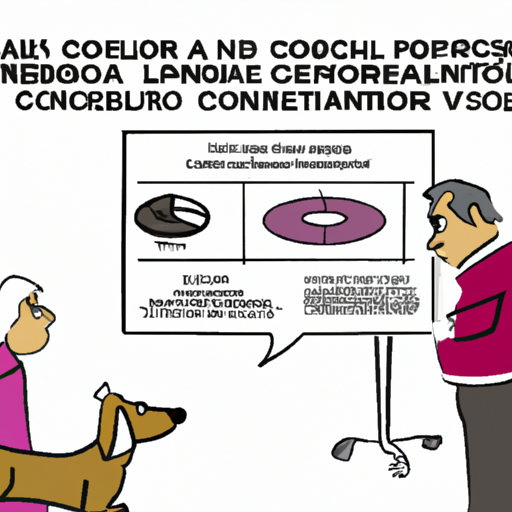As a pet owner, it can be incredibly distressing to see your dog in any form of discomfort or pain. One such condition that can cause significant distress is rectal prolapse, a condition where the rectum, the final part of the large intestine, protrudes from the anus. Understanding the causes and treatment options for this condition can help you take the best possible care of your furry friend.
- Key Takeaways
- Rectal prolapse in dogs is often caused by an underlying condition and not a disease in itself.
- It can be linked to a variety of factors, including gastrointestinal disorders, parasites, and physical trauma.
- Treatment depends on the severity of the prolapse and the underlying cause.
-
Early detection and treatment can help prevent complications and improve the prognosis.
-
Table of Contents
- Causes of Rectal Prolapse in Dogs
- Symptoms and Diagnosis
- Treatment Options
- Prevention and Care
- Frequently Asked Questions
Causes of Rectal Prolapse in Dogs
Rectal prolapse often occurs as a result of increased strain on the pelvis and rectum. It’s not a disease in itself, but rather a symptom of an underlying condition. Let’s take a closer look at some of these conditions:
-
Gastrointestinal Disorders: Conditions like diarrhea and constipation can lead to repeated straining during defecation, causing the rectum to prolapse. Chronic gastrointestinal disorders may also lead to weakening of the muscles around the rectum.
-
Parasites: Parasitic infections, such as whipworms and roundworms, can cause inflammation and diarrhea, leading to rectal prolapse.
-
Physical Trauma: Trauma or injury to the pelvic area can result in rectal prolapse. This could be due to an accident or surgical procedures.
-
Neurological Disorders: Conditions that affect the nervous system can interfere with the normal functioning of the rectum and anus, leading to prolapse.
-
Prostatic disease: This condition in male dogs can lead to straining and subsequent rectal prolapse.
Symptoms and Diagnosis
The most obvious symptom of rectal prolapse in dogs is the visible protrusion of the rectum from the anus. This may appear as a reddish mass that can be mistaken for a tumor or growth. Other symptoms can include difficulty defecating, bloody stools, and signs of discomfort or pain.
If you notice these symptoms, it’s important to take your dog to the vet as soon as possible. The vet will perform a physical examination and may also conduct additional tests to determine the underlying cause of the prolapse. For example, a fecal examination can reveal the presence of parasites.
Treatment Options
The treatment for rectal prolapse in dogs depends on the severity of the condition and the underlying cause. Mild cases may be resolved by manually repositioning the rectum, followed by a purse-string suture to prevent recurrence.
In more severe cases, if the prolapsed tissue is damaged or necrotic, surgery may be required. This could involve amputation of the affected part of the rectum.
Regardless of the treatment approach, addressing the underlying cause is crucial. This could involve treating the parasitic infection, adjusting the diet to manage gastrointestinal disorders, or providing appropriate treatment for neurological conditions.
After treatment, follow-up care is essential to monitor your dog’s recovery and to ensure that there is no recurrence of the prolapse. This may involve regular vet check-ups and adjustments to your dog’s diet and lifestyle.
Prevention and Care
While it may not be possible to prevent all cases of rectal prolapse, there are steps you can take to reduce your dog’s risk. These include regular vet check-ups, a balanced diet, and prompt treatment of any gastrointestinal disorders or parasite infestations.
If your dog has been diagnosed with rectal prolapse, it’s essential to follow your vet’s advice regarding care and treatment. This may include administering prescribed medications, following a specific diet, and ensuring that your dog gets regular exercise to maintain a healthy weight.
Frequently Asked Questions
1. Can rectal prolapse in dogs resolve itself?
While mild cases of rectal prolapse can sometimes resolve themselves with rest and a change in diet, it’s essential to seek veterinary advice to ensure the problem is properly treated and doesn’t recur.
2. Is rectal prolapse in dogs a medical emergency?
Rectal prolapse can be distressing for your dog and, if left untreated, it can lead to complications such as tissue necrosis. Always seek veterinary attention if you notice your dog experiencing symptoms of rectal prolapse.
3. Can puppies get rectal prolapse?
Yes, puppies can get rectal prolapse, often due to parasites or diarrhea. If you notice a protrusion from your puppy’s anus, it’s important to seek veterinary attention promptly.
In conclusion, rectal prolapse in dogs can be a distressing condition, but with prompt detection and treatment, it can be effectively managed. As a pet owner, your awareness and proactive approach can go a long way in ensuring the wellbeing of your furry friend.
Relevant Resources
-
The American Veterinary Medical Association provides comprehensive information on various pet health issues, including rectal prolapse.
-
For more in-depth information about gastrointestinal disorders in dogs, you can refer to this PetMD article.
-
For more information on caring for your dog, check out these blogs on OneTopDog:
- Understanding Your Dog’s Health
- Common Parasites in Dogs
- Caring for Your Dog After Surgery



